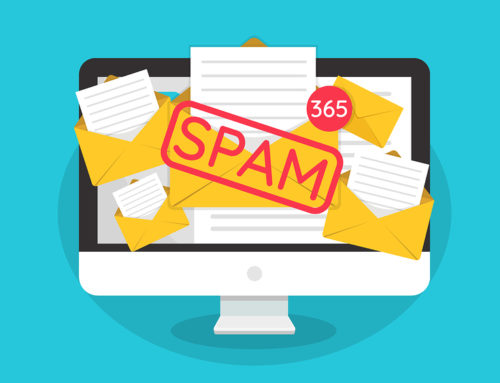
Jay Love
Collecting data is an important part of your job as a nonprofit communicator. But if you aren’t organizing it in a way that is useful, you may be wasting your time and not being as effective as you could be. Jay Love of Bloomerang joins us today to give you ideas on organizing all of your data. ~Kristina
Guest Post by Jay Love
Whether you’re a part of a large nonprofit organization or a small shop operation, the consensus is clear: smarter nonprofit fundraising starts with the right data.
When your nonprofit understands its community well, you can better plan campaigns, offer more effective engagement opportunities, and retain a higher percentage of givers. However, all of that depends on having organized, informative data to guide you.
One of the most common roadblocks nonprofits face is data mismanagement. Your team might not be collecting enough data, or enough of the data you need. Alternatively, you might have the necessary data on hand but not know how to leverage it effectively.
Luckily, there are many simple strategies your team can try to make the most of your donor data. Your nonprofit should:
- Know what metrics you should be tracking.
- Maintain clean donor profiles.
- Track individual donor relationships.
- Keep an eye on your major goals.
- Collect data through integrated software tools.
Think your team needs to learn how to better organize its donor data? Let’s dive into these essential tips so you can start improving outcomes for your cause.
 1. Know what metrics you should be tracking.
1. Know what metrics you should be tracking.
In all likelihood, your nonprofit either has a donor database in place, or is supplementing with a different kind of data management system.
These days, it’s near impossible to find a nonprofit that isn’t using some sort of software to manage their donor data, whether it’s a fully-loaded nonprofit CRM or a simple spreadsheet.
Yet, as much as nonprofits know they should be tracking donor data, for many organizations it’s not clear how that data fits into the big picture of their strategy.
The bottom line is that the more you know about your donors, the better. But, the most effective nonprofits also understand that to truly take charge of your donor data strategy, you need to track relevant metrics.
For example, let’s say your donor management system has tools in place to record when donors make a gift. If you simply collect this giving history data and leave it at that, your team won’t actually learn from the information you’re amassing.
Instead, you’ll want to choose a donor database software that turns giving history data into fundraising insights. Your software can help you see when donors are giving more frequently, when they’ve lapsed in giving, or even when they’ve made a more generous gift than usual.
Looking for a smarter donor database solution? Check out Bloomerang’s guide to donor database software metrics to find out what your platform should be monitoring.
 2. Maintain clean donor profiles.
2. Maintain clean donor profiles.
Another common challenge nonprofits face is that their data collection and management strategies leave room for error or confusion.
Although you want to learn as much as possible about donors, amassing data incorrectly can cause problems for your team and make reaching your goals even harder.
The best way to ensure that your team is organizing its donor data effectively is to build unique donor profiles for each of your constituents. To do so, you’ll need to invest in a nonprofit donor database that can support the number of profiles you’ll need.
Your donor profiles will consolidate all you know about your donors, including:
- Their giving history
- Their biographical data
- Their contact information
- Their engagement history
- Their wealth information
However, one data management mistake that nonprofits often make is failing to verify, update, or cross-check their donor data after it’s logged away into donor profiles. This can lead to donor profiles that include duplicate information, incorrect data, or are otherwise ineffective.
To keep your donor data as organized as possible, you’ll want to choose a donor database platform that helps your team keep track of errors like these and correct your records before it’s too late. One helpful feature to look for? Deduplication tools.
Deduplication tools seek out duplicate donor profiles and information to ensure each of the unique constituents recorded in your database reflect individual supporters. This way, you’ll never accidentally count Sarah Jones’ donation twice and skew your fundraising data.
 3. Track individual donor relationships.
3. Track individual donor relationships.
One of the most important elements of your nonprofit’s donor data strategy should be finding connections between donors. This way, you can more effectively frame your understanding of how that donor fits into your community.
By doing so, you can be better informed when engaging with that constituent, asking them for a gift, and reengaging them down the line. Luckily, there are a number of ways to leverage donor data management tools to track key donor relationships.
First, you can create donor segments to better understand your community. These groups represent similar cohorts of supporters and can be used to make tailored solicitations or better target your marketing efforts.
Your team can group supporters together by:
- Donor type
- Gender
- Region
- Profession
- Wealth
- Giving history
- Political affiliation
Ultimately, your nonprofit should take a step back and figure out what segmentation markers are relevant to your strategy.
For example, if you find that your organization has a hard time upgrading donors, you might want to pay special attention to wealth indications and segment groups of different donor tiers to tailor your outreach efforts.
Further, you can leverage your nonprofit CRM to group together donors who have relationships with one another in the outside world. Maybe they’re members of the same household, work at the same company, or attended the same university.
However your supporters are connected to one another, it’s crucial that your donor database offers the tools you need to identify these connections and incorporate them into your nonprofit’s donor data strategy.
 4. Keep an eye on your major goals.
4. Keep an eye on your major goals.
When it comes to more effectively managing your data, it can be easy to lose sight of the reasons why you want to do so.
As most nonprofit professionals understand, smart data management skills are just one piece of the puzzle. To fulfill your nonprofit’s goals, you need to have a plan in place to gain insights and implement what you’ve learned from that data.
This is why it’s so important to choose a donor database that keeps your nonprofit’s goals front of mind.
Whether you want to increase fundraising revenue year over year, boost your number of returning givers, or increase event attendance, your CRM should have tools in place to help your team monitor its progress.
Even more important? Data reporting features. Your carefully cultivated donor data means nothing if your team can’t share insights across arms of your organization. Pick a donor database that makes data reporting easy with customizable reports and data analytics.
However, one of the most important parts of improving your donor data strategy is keeping your individual donors at the heart of your efforts. Rather than thinking of their data points as faceless numbers, leverage a CRM that puts your progress with individual supporters into context.
For example, you could choose a donor database that lets your team view an analysis of a donor’s giving history over time to get a better sense of how their relationship has grown with your nonprofit.
Even further, your CRM should offer insights into how well your team is engaging that constituent. This way, if you see an overall dip in engagement data you can take a deeper dive into individual donor profiles to see exactly where your team is missing the mark.
 5. Collect data through integrated software tools.
5. Collect data through integrated software tools.
Finally, one of the best ways your team can organize its donor data is to streamline how you collect that information in the first place.
If your nonprofit is manually logging data from dozens of different sources, this can spell disaster for your donor data management strategy. The reality is that the more you leave your efforts open to human error, the more likely it is your donor data will be mismanaged.
This is why it’s so important to invest in a donor database that integrates with a wide range of nonprofit software. Your CRM tools certainly won’t be the only software your nonprofit uses, so why make things more difficult than they need to be?
By investing in nonprofit software that integrates into a cohesive system, you’ll be able to spend more time focusing on your strategy and less time worrying about importing data across platforms.
Look for a nonprofit CRM that integrates with your favorite:
- Prospect research software
- Accounting tools
- Content management system
- Fundraising platform
(Bonus! Looking to find the right fundraising software partner? Check out Qgiv’s top online donation tools to get your search started.)
When your nonprofit operates under a seamless software ecosystem, you’ll be able to gain greater insight into what drives your donors. Even better, by minimizing manual input into your system, your organization can avoid data entry mistakes.
Donor data management can be challenging. But, when your nonprofit invests in the right database tools, there’s no limit to what you can learn from your community!
Jay B. Love is a Co-Founder and current Chief Relationship Officer at Bloomerang. Prior to Bloomerang, he was the CEO and Co-Founder of eTapestry for 11 years, which at the time was the leading SaaS technology company serving the charity sector. Jay and his team grew the company to more than 10,000 nonprofit clients, charting a decade of record growth. He is a graduate of Butler University with a B.S. in Business Administration. Over the years, he has given more than 2,500 speeches around the world for the charity sector and is often the voice of new technology for fundraisers.






